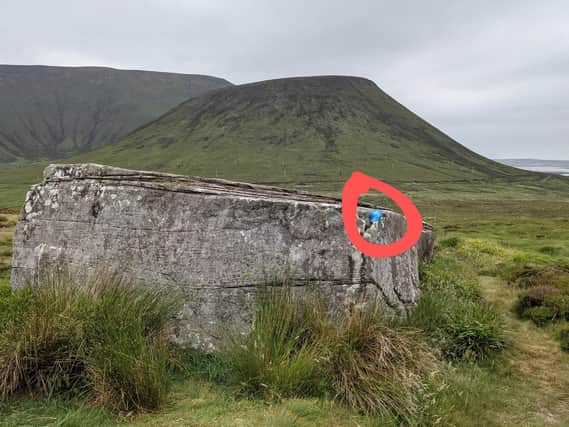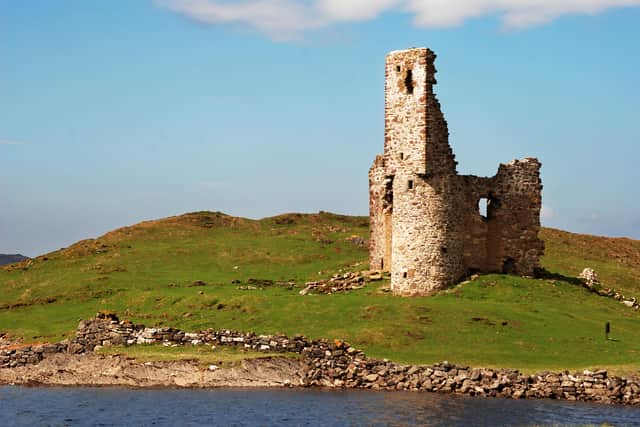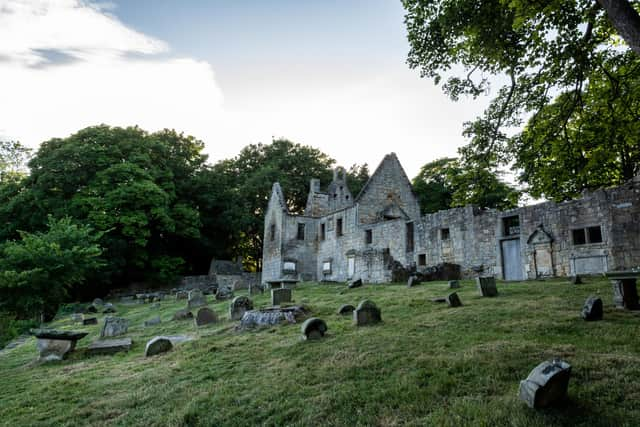'Feral' visitors leave toilet roll on Orkney ancient monument


David C Weinczok came across the waste while visiting the Dwarfie Stane on the isle of Hoy during a recent visit.
The stone is a scheduled monument and around 5,000 years old with the tomb cut into a single piece of rock.
Advertisement
Hide AdAdvertisement
Hide AdMr Weinczok, author of The History Behind the Game of Thrones and presenter and writer of The Castle Hunter, said: “This is a heritage crime and just a feral thing to do.”


An earlier article reported the toilet roll was used, but it is now not clear this was the case.
The author reported the discarded toilet roll, which had been left in a plastic bag, to police but it is understood the matter would not be classed as a heritage crime, given there was no damage to the Scheduled Monument.
The discarded loo roll at Hoy comes as heritage chiefs and police deal with a growing caseload of offences at Scotland’s historic sites.


The incidents are being driven by the rising number of people venturing into their home country as foreign travel remains restricted.
Peter McGrath, head of security of Historic Environment Scotland, said a lack of awareness of scheduled monuments and the protection they had in law was often behind incidents.
Recent cases include fire pit damage in the grounds of St Bridget’s Kirk at Dalgety Bay and the theft of a 16th Century millstone from Aberdour Castle, also in Fife.
Historic sites have become natural gathering points over lockdown in some cases, with incidents of anti-social behaviour at Ravenscraig Castle where walls have been scaled and damaged.
Advertisement
Hide AdAdvertisement
Hide AdAt Lincluden Collegiate Church in Dumfries, one teenager was hospitalised after falling from a high wall at the historic site.
Further north at Ardvreck Castle in Assynt, there have been reports of people climbing on the high walls of the ruin, putting both themselves and the structure at risk. Issues of fires being lit nearby by tourists have also been raised.
Peter McGrath, head of physical security at Historic Environment Scotland, said there had been a “growing trend” in petty damage, illegal metal detecting, vandalism, graffiti, fire setting and general antisocial behaviour reported across sites in Scotland, particularly in the last year since lockdown.
He said: “Over recent years there’s been a sharp growth in heritage crime, the impact of which can be significant. Even though it may not always be recognised as such, this type of crime has a shock value to our society and, at its core, can fundamentally alter our past, disrupt our present and change our future.
"We’re in the business of conservation and we want to maintain these ancient monuments for future generations. Damage and loss that occurs through crime and disrespect is just not acceptable."
Inspector Alan Dron is the chair of the Scottish Heritage Crime Group, which brings a number of agencies together to crack down on offences against Scotland’s oldest and most important buildings and landmarks.
Inspector Dron said: “Things really spiked last year because of Covid as people were being encouraged to stay local and explore their own area. The biggest thing that came to light for us was illegal metal detecting.
"What we are now starting to see is that more people are starting to recognise heritage crime and they are concerned about it, because people are appreciating what is on their doorstep.”
